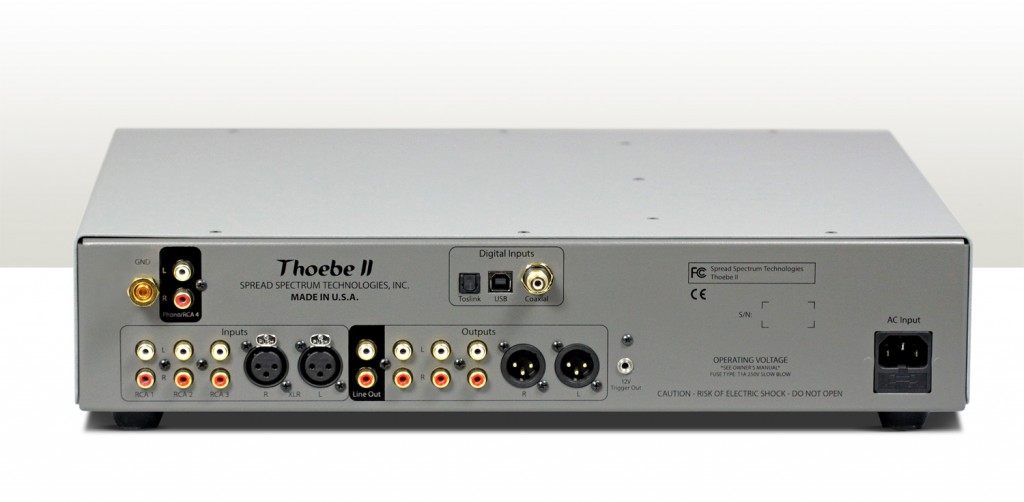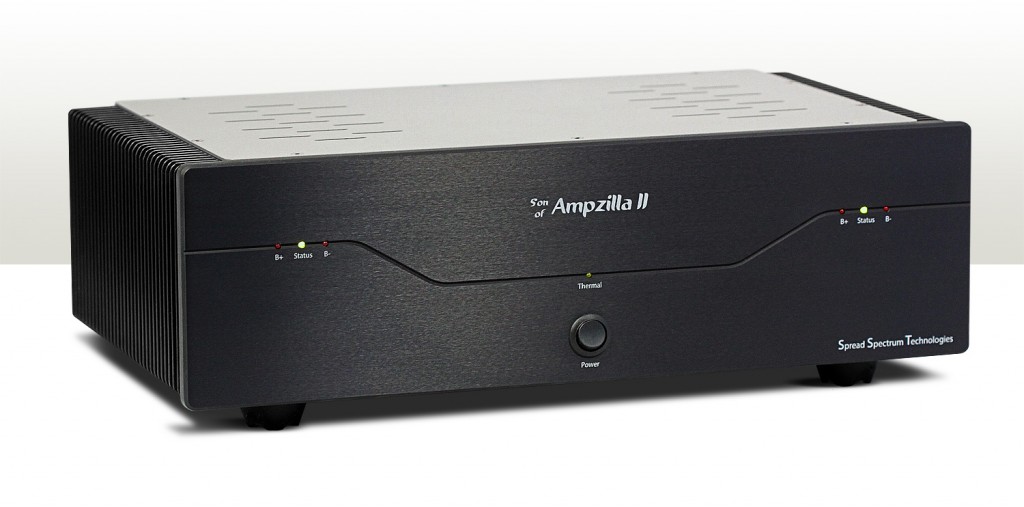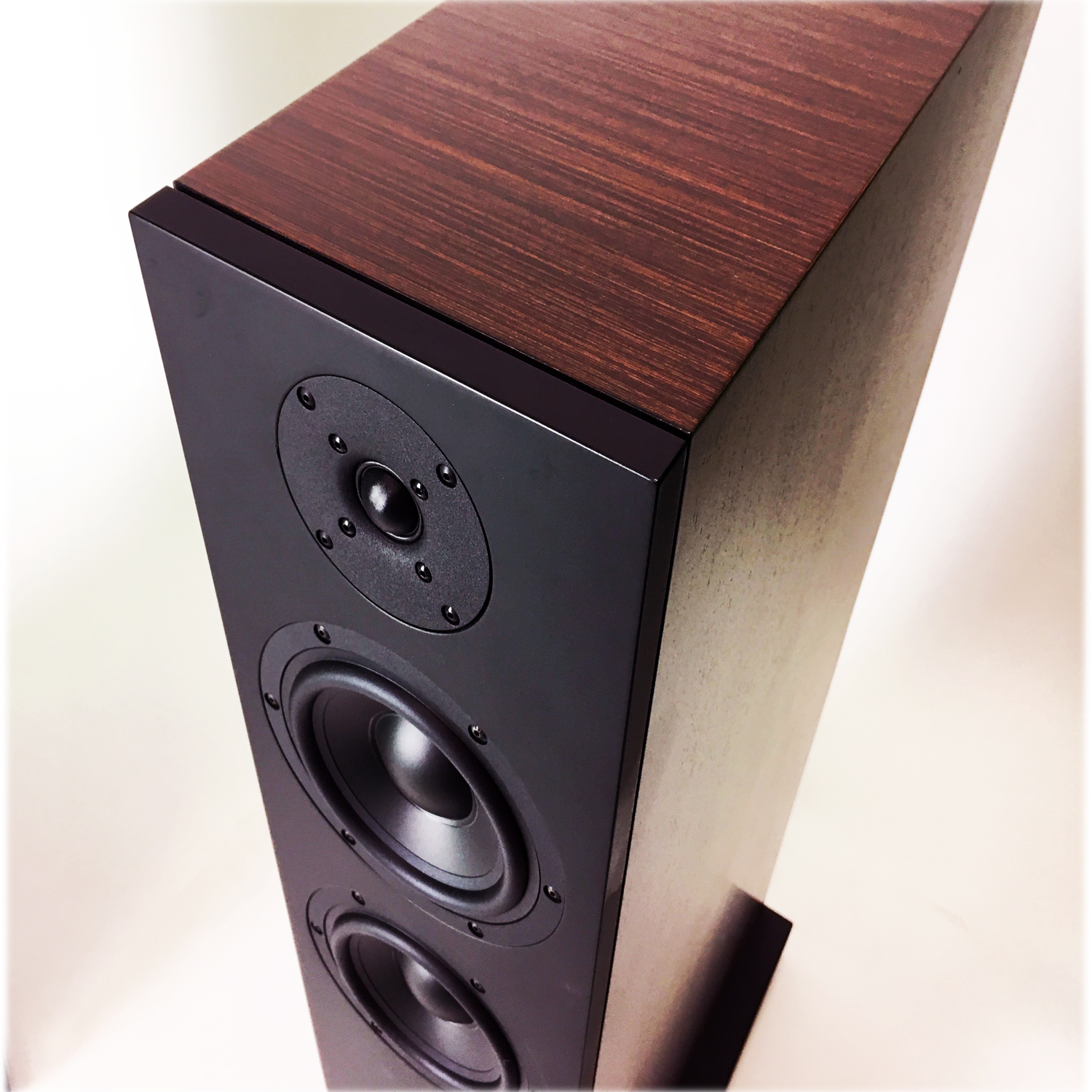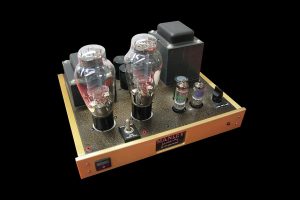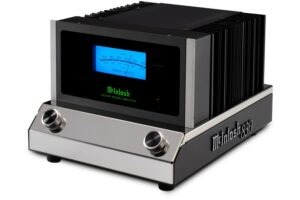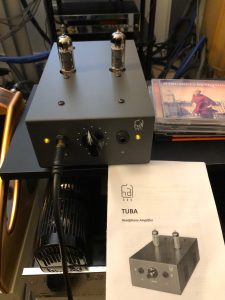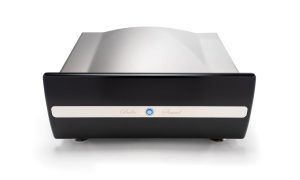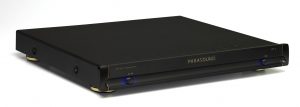These are interesting pieces to have to write about in my first for Positive Feedback. When I picked them up, Dave, who hadn't heard them, said something like, "You may not like them and if so, then just don't write about them." But I didn't think that; I wasn't expecting miracles, but I nearly got them.
These sorts of articles always begin with, "Let's cut to the chase." So here it is again—let's cut to the chase: the Theobe II and the Son are exactly what they appear to be, they're well built (like miniature tanks, really), and for the money, I have absolutely no nits to pick with how they sound.
The Theobe II preamp does everything you expect from a contemporary preamp, and (as reviewed) throws in a phono stage and DAC. Plus, in my opinion, it looks really good to boot. It offers 1 XLR line-level input, 3 RCA line inputs plus an additional phono input, and 3 digital ins (Toslink, coaxial and USB). At a base price of $3500, and still under $4500 as reviewed, I wouldn't exactly call it a bargain, but it's not far off the mark. Inputs are selected via a pair of up and down switches, as are adjustments for bass and treble, phase, gain, balance, dimming the display LED and muting the output. All adjustments are made via a single, infinite pot, or an optional remote.
At ye absolute sounde of olde, we weren't supposed to take price into account—and were supposed to be very circumspect when referencing anything but real, actual, live music. But that approach, while it has its merits, falls short of the requirements of pieces like these. The price is, in many respects, the point. For this article I used a recently acquired PS Audio DirectStream, and, miraculously, someone I know gave me a Levinson Model 28 preamp he no longer used. This isn't shabby company for comparison.
The line-stage of the Theobe is very transparent—as you would expect—though a very slight touch mid-bass shy relative to the Levinson. Using the Magnum Dynalab Etude tuner, that classic FM-announcer voice (a voice right up on a mic) has a bit more oomph through the Levinson, a greater sense of the bottom end—though I have to say, even though I've got a little bit of a thing for mid-bass, that's relative. The Theoebe may in fact be truer, but it gives the Levinson a slightly more appealing aspect to my ears. But the Levinson debuted at $3995 in 1990—a long time ago, in a price-point far, far away. Now, in inflation-adjusted dollars, that $3995 is closer to $7500.
You can hear the same light-weight-ness, relative to the Levinson, by comparing phono stages (and it may be, probably is, attributable to the line stage). But, again, that's only relative. Using the wonderful LP of Ligeti pieces on BIS (BIS-LP-53), the depth of the stage is slightly more apparent on the Levinson. But toss a coin, and you might favor the Thoebe. Both the Thoebe and the Levinson didn't come up to the performance of the legendary and fully balanced E.A.R. G88 preamp (which was how I did all my listening for 23 years), but even Tim deParavacini won't make that anymore. (And that E.A.R. would now cost about $34,000). Using the side "Summer" from Wendy Carlos' Sonic Seasonings, I expected the sound to wrap around my head, as it always did with the G88. And it didn't do that with either the 28 or the SST. But the Thoebe nonetheless presents the music in a very friendly fashion; noise- and grain-free. The manual lists it as appropriate for moving magnet and high-output moving coils. It handled an Audioquest 7000 Fe5 and a Lyra Lydian/beta perfectly well, though just to push it a little further I hooked up an E.A.R. MC3 matching transformer and that seemed to cinch the deal. And for an added $500 for the phono stage, well, as I said, I wasn't expecting miracles, but I nearly got them.
Likewise with the DAC: it clearly demonstrates just how good you can get for an additional $500. It's good enough to make an extremely capable first (or even final, if you don't have to have the very best) DAC for someone. It's USB input supports up to 384kHz PCM and DSD64 + DSD128. Listening to the Paray/Detroit SO Ibert/Ravel disc on Mercury (432 003-2), yes, the PS has the edge, but is it an edge worth another $5495? You'll probably have to decide for yourself. Me, I'm glad that I don't have to choose. The difference shows up in the massed strings from the RCA Reiner/Chicago Also Sprach Zarathustra (XRCD2 JMCXR-0011)—it's a bit "brighter" (or more strident, which is easy with that recording) with the Theobe DAC. I say it that way because it's sometimes a good thing, that extra bit of brightness over the PS. But really, it's a bit, not much. And the PS also converts everything before the output to DSD.
Both the phono stage and the DAC are good examples of my pal Neil Gader's contention that one doesn't have to spend much at all to get very good quality sound—for another $750, unless you're absolutely certain you only need a line stage, this is a no-brainer.
On top of all that there's a pretty good headphone out, switched and un-switched. Using a pair of prototype-ish Grados (modified HP-1), the picture from my standalone E.A.R. HP4 headphone amp is deeper and wider, and more, well, tube-like—but if you don't have one of these or something like it, it's really very good.
And then, lastly, you get treble and bass "controls"; which are minute enough that they function unlike conventional controls, but rather like subtle adjustments to the presentation. Of course there's nothing to stop anyone from using conventional controls like those on the Thoebe—just turning those controls up or down a little bit would do it—but with these, you can't adjust to extremes, you can only tweak the sound a little bit, 5dB maximum in either direction—not nearly enough to get into trouble.
About the Son of Ampzilla II (the sequel!) I have very little to say—and that's a good thing. I placed it in my rack, displacing one of my reference BEL 1001 Mk. Vs, and it performed relatively flawlessly until I went back to the BELs. Richard Brown may have been a couple decades ahead with his solid-state design, but the world has largely caught up. It's very similar sonically. I've had tube amps in here that give a very different presentation (I'm thinking of the Air Tight and my old VTLs), but the Son and the BELs are cut from the same cloth; one hesitates to call it more neutral, but it certainly sounds that way. I've only heard one tube amp—the E.A.R. 509 —with a similar presentation. The Son never encountered the slightest problem putting out what the Thoebe (or the Levinson) threw at it, whether LP, digital or FM. It did nothing wrong, and always sounded transparent and excellent.
And it's a mini-bruiser, a compact 40 pounds (which was a drag to move around, since I'd just had a hernia surgery… fun!). Its compact size might fool you, as it did me.
All in all, it's been a really fun 6 or 7 weeks!
SST





